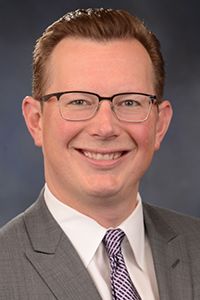
Former Nevada State Senator Ben Kieckhefer tapped as Governor-elect Lombardo's Chief of Staff.
As Redistricting Begins in Nevada, Concerns Arise Over Partisan and Racial Gerrymandering
Sen. Kieckhefer pleas for unbiased lines fall on deaf ears
By Megan Barth, October 4, 2021 6:00 am

Redistricting is the process by which new congressional and state legislative district boundaries are drawn. Each of Nevada’s four United States Representatives and 63 state legislators are elected from political divisions called districts. United States Senators are not elected by districts, but by the states at large. District lines are redrawn every 10 years following completion of the United States census. The federal government stipulates that districts must have nearly equal populations and must not discriminate on the basis of race or ethnicity
Nevada’s state government is currently under a Democratic trifecta. This means that Democrats have single-party control over redistricting, which increases the risk of partisan and racial gerrymandering. The state Constitution empowers state lawmakers to draw each decade’s new maps and with the regular legislative session having ended in June, Gov. Steve Sisolak will call a special session in the next few weeks for lawmakers to create the maps. While Nevada did not add a new Congressional seat, the 404,000 new residents added between 2010 and 2020 will surely impact the look and demographics of all districts.
The term “gerrymandering” gets its name from an 1812 map approved by Massachusetts Governor Elbridge Gerry. When opponents said that one district was so obviously illogical that it looked like a salamander, the portmanteau “gerrymander” was born. It’s been used to American political advantage ever since.
While some gerrymandering is used simply to protect incumbents or keep oddly shaped towns in one district, it’s the kind of “extreme partisan gerrymandering” that has concerned the courts more recently. Three cases—Rucho v. Common Cause, Rucho v. League of Women Voters of North Carolina, and Lamone v. Benisek—have made it to the Supreme Court. But the court has generally held that it does not have the power to overturn districts that have been manipulated for political gain, so long as racial discrimination does not underlie their creation.
In New York, for example, voters overwhelmingly passed a law to form a bipartisan commission empowered to draw non-partisan lines that wouldn’t favor either party. But according to the New York Times, “Democratic lawmakers in New York and Washington are already laying the groundwork to cast them aside — plotting to use their supermajorities in Albany to draw new district boundaries for the next decade that might eliminate as many as five Republican-held seats.”
Nevada’s most outspoken gerrymandering opponent has been State Sen. Ben Kieckhefer (R-16), who’s long positioned himself as a “good governance” scold. Kieckhefer introduced Senate Joint Resolution 9 on March 17, 2021. It would have created a seven-member redistricting commission free from political influence, similar to a 2020 citizen-driven initiative that failed to gather enough signatures to land on that year’s ballot. So far, Kieckhefer’s pleas have fallen on deaf ears. The resolution died on Apr 10, 2021, though Kieckhefer continues to advocate for fairer maps. Kieckhefer’s term limited and will be leaving his seat in 2022. His once solidly Republican district along with several others, could become much more competitive once the Democratic majority in the Legislature finishes redrawing the Silver State’s political maps later this year.
The Nevada legislature has released its 2020 redistricting website, where the public can find relevant information and maps.
In 2021, to participate in the Legislature’s public input process a person may:
- Obtain Nevada redistricting data from OpenPrecincts.
- Start to plan out what defines your community – whether it’s a shared economic interest, school districts, or other social or other cultural, historical, or economic interests – and how that can be represented on a map. This will come in handy once the Legislature starts collecting feedback.
- Use software tools such as Dave’s Redistricting App and Districtr to draw district maps showing either (a) what a fair map would look like, or (b) where the community you believe should be better represented is located.
- Illegal Alien Identified As Wrong-Way Driver in Fatal Crash That Killed LVMPD Officer - December 23, 2024
- Senator Rosen Joins Letter Raising Concerns About Pete Hegseth’s Nomination - December 20, 2024
- NV SOS Launches Four Investigations Into 2024 Election Violations - December 20, 2024


